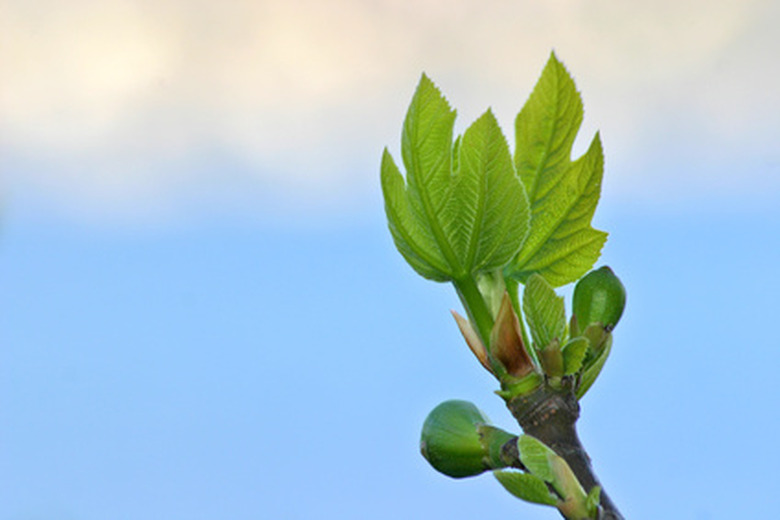How To Grow Fig Trees In Virginia
Things Needed
- pH test kit
- Lime (optional)
- Sulfur (optional)
- Shovel
- Fig tree
- 10-10-10 fertilizer (optional)
- Lopping shears
- Burlap
- Pins
Figs provide sweet-tasting fruit that's also suitable for canning, drying and baking. They come in green, brown or black. Virginia gardeners can choose either green or black figs. Gardeners in the western part of the state will have a harder time with their fig tree, since the low winter temperatures can damage fig trees, but most Virginia gardeners should be able to nurture a fig tree with regular care.
Step 1
Purchase a cold-hardy fig tree in spring when frost danger has passed if you live in Virginia's western region, which lies in hardiness zone 6. Growers in the central and coastal areas have a warmer climate so trees need little winter protection. Tropical Mango recommends Blue Celeste, Brown Turkey or Brunswick as especially cold hardy.
- Figs provide sweet-tasting fruit that's also suitable for canning, drying and baking.
- Gardeners in the western part of the state will have a harder time with their fig tree, since the low winter temperatures can damage fig trees, but most Virginia gardeners should be able to nurture a fig tree with regular care.
Step 2
Choose a planting site that offers your fig tree at least eight hours of sun per day and protection from the wind. Planting on the south or southeast side of your house can offer a natural windbreak. Test the soil in your location. Figs prefer a pH of 6 to 6.5. Amend your soil by adding lime to make it less acidic or sulfur to make it more acidic, using The Garden Helper's recommendations for your type of soil.
Step 3
Dig a hole twice the size of your fig tree's root ball. Remove rocks and weeds from the hole. Pull your fig tree from its container and break apart the root ball, unwinding tangled roots.
- Choose a planting site that offers your fig tree at least eight hours of sun per day and protection from the wind.
- Pull your fig tree from its container and break apart the root ball, unwinding tangled roots.
Step 4
Place the fig tree in the hole at the depth it was planted in the container. Hold the trunk straight and fill in the hole with soil.
Step 5
Water the newly planted fig until the soil compresses around the plant and becomes saturated with water.
Step 6
Leave the fig plant to grow without pruning for its first year.
Step 7
Give the fig tree 1 inch of water per week unless you receive adequate rainfall that week.
Step 8
Protect fig trees for the winter by wrapping them in burlap late in fall, when temperatures drop below 40 degrees F. Wrap a cylinder of burlap around your fig tree. Before you secure the top of the burlap, fill the inside of the cylinder with autumn leaves, which will offer natural protection from the cold. Secure the burlap layers with pins. Leave this in place all winter until the last frost danger passes in the spring.
- Place the fig tree in the hole at the depth it was planted in the container.
- Before you secure the top of the burlap, fill the inside of the cylinder with autumn leaves, which will offer natural protection from the cold.
Step 9
Apply 1/2 lb. of 10-10-10 fertilizer in the spring after the danger of frost has passed only if your fig tree shows little vegetation growth. Otherwise, do not fertilize your fig tree; figs are naturally vigorous plants that rarely need care.
Step 10
Select three to four limbs on your fig tree in the spring the year after planting. These will be your fruit-bearing shoots. Strip all other shoots off the tree at its base. In subsequent years, prune off any dead wood on your fig tree and thin out the canopy by removing up to 1/3 of the old wood in a season.
- of 10-10-10 fertilizer in the spring after the danger of frost has passed only if your fig tree shows little vegetation growth.
